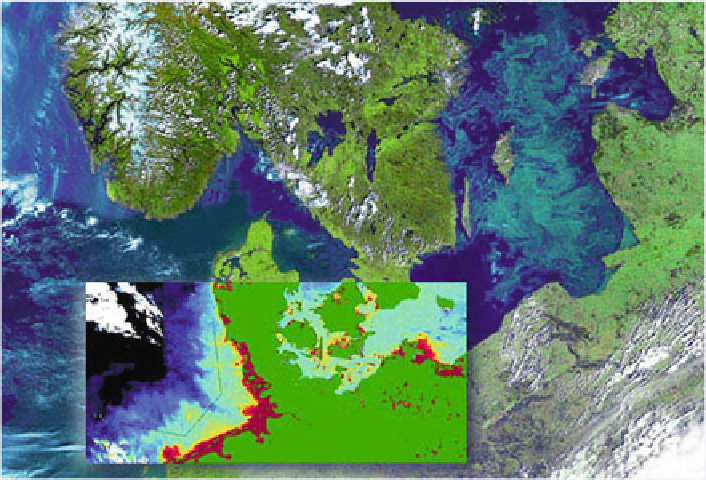Geoscience Reference
In-Depth Information
20.2.1.6 Operational Satellite Systems in the Baltic Sea
Frequent occurrences of massive cyanobacterial blooms in the open Baltic Sea
require operational satellite data for adequate monitoring of their extent. Different
environmental institutes make retrieved bio-geophysical satellite products available
online to a wide range of end-users, such as environmental agencies, tourism, or
fisheries. The Swedish Meteorological and Hydrological Institute (SMHI) and the
Finnish Environmental Institute (SYKE) have developed online information sys-
tems for water quality monitoring of the Baltic Sea, which are operational since
Both open web systems use Advanced Very High Resolution Radiometer (AVHRR)
for near real-time monitoring of sea surface temperature, cyanobacterial blooms,
institutes have also started to include MERIS data in their operational monitoring
systems.
The Water Quality Service System (WAQSS,
http://www.waqss.de/
) was devel-
oped by Brockman Consult, Germany within the ESA project MarCoast for Global
of a marine downstream service that adds value to the data and delivers customized
Fig. 20.6
WAQSS - The Water Quality Service System, a service for coastal management pro-
vided by Brockmann Consult, Germany;
http://www.brockmann-consult.de/waqss/
. The system is
user friendly and provides both standard and customized products to the end-user
4
http://www.smhi.se/oceanografi/oce_info_data/BAWS/algal_blooms_baltic_en.htm
;
http://www.ymparisto.fi/default.asp?contentid
=
87506&lan
=
en

